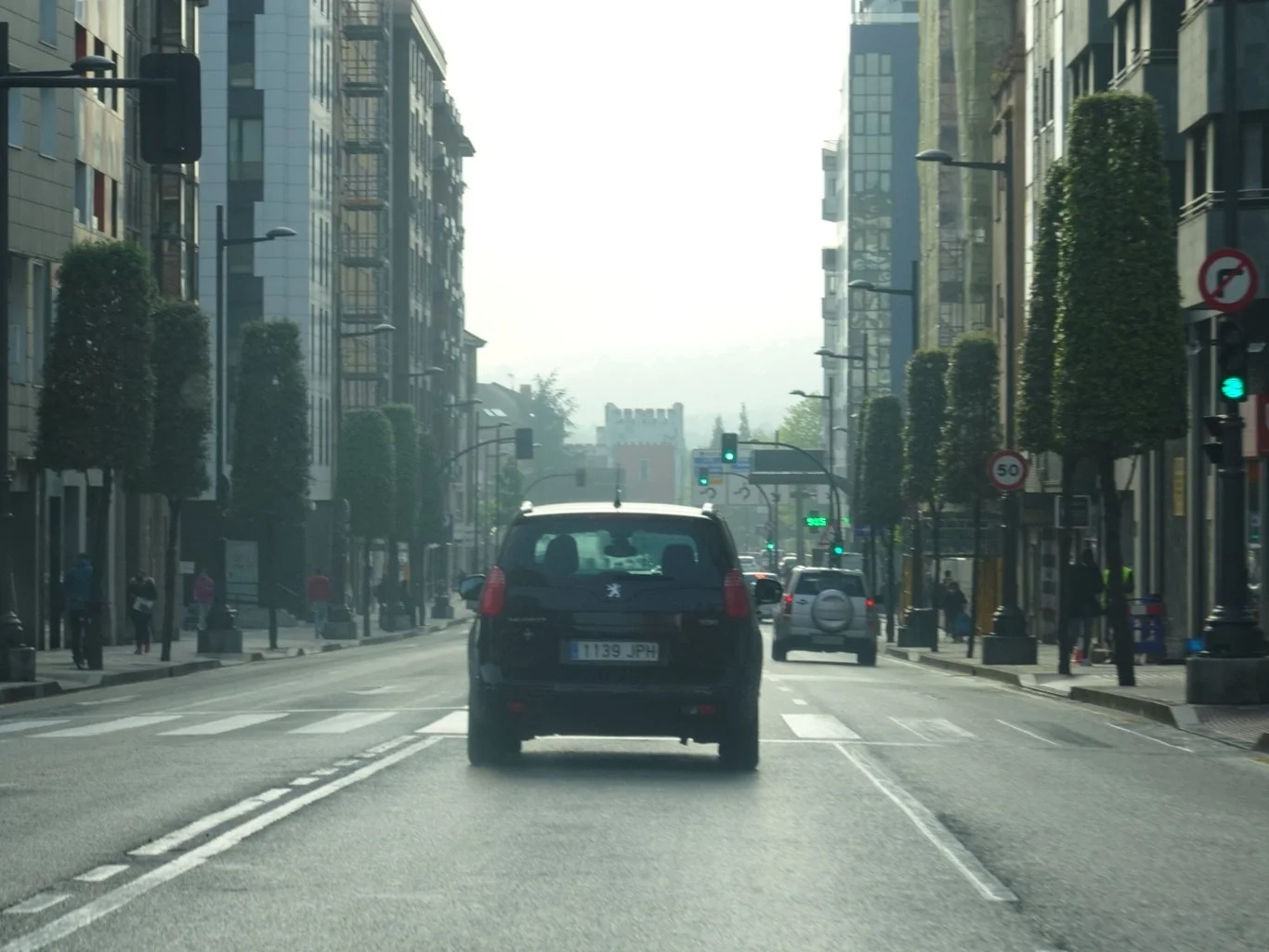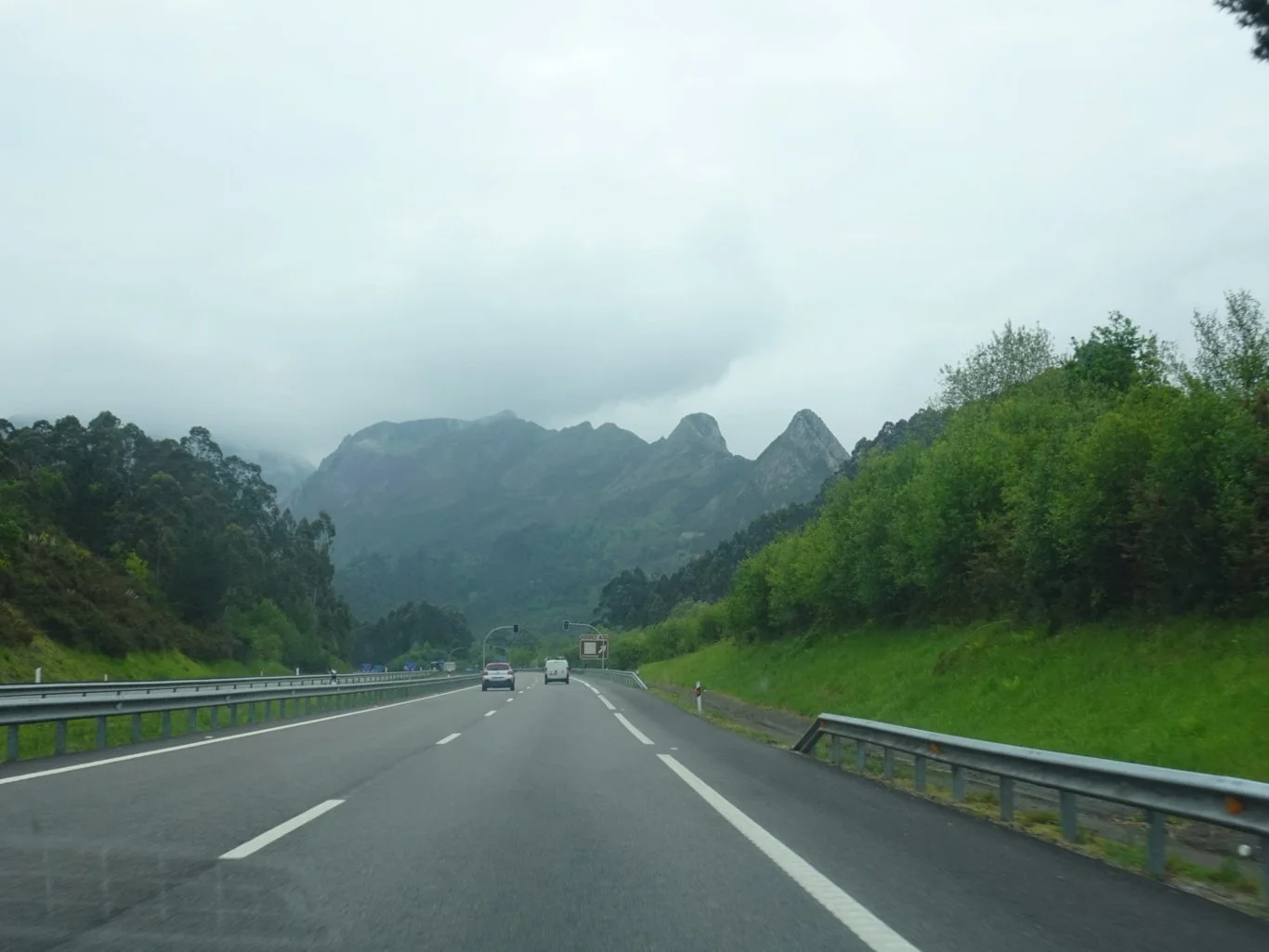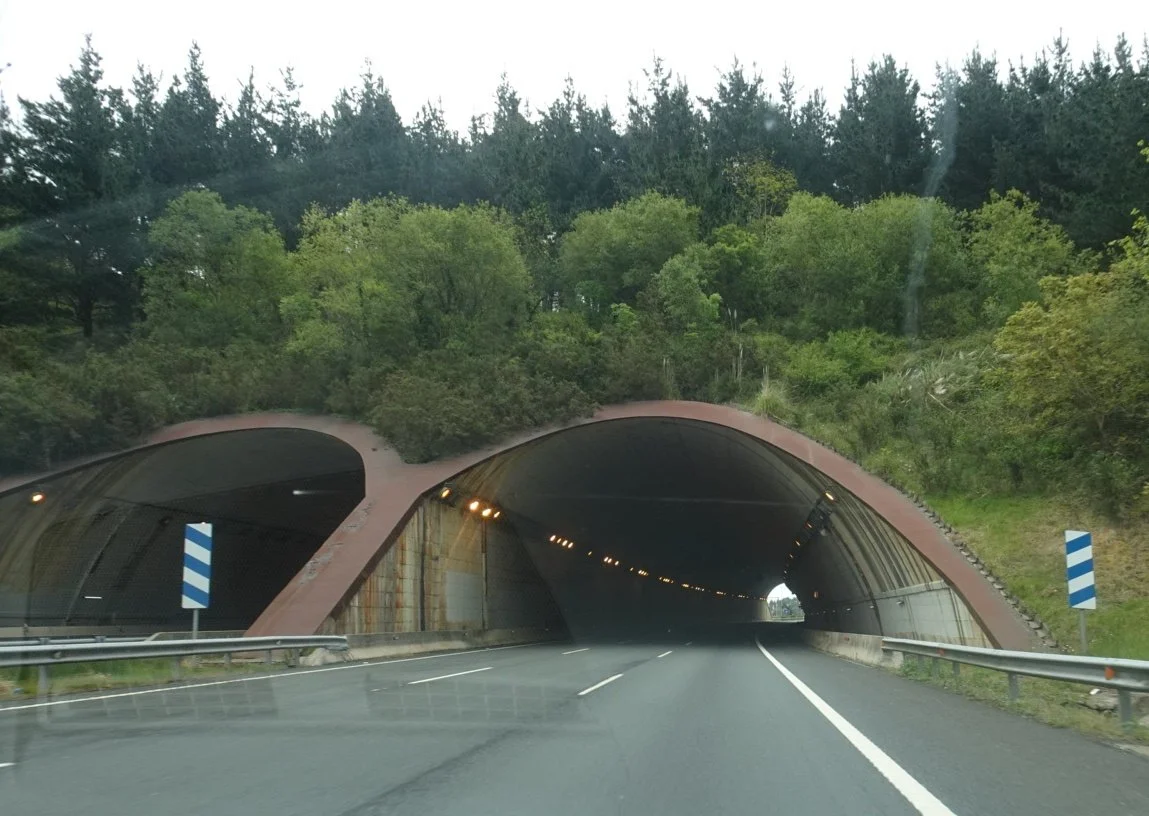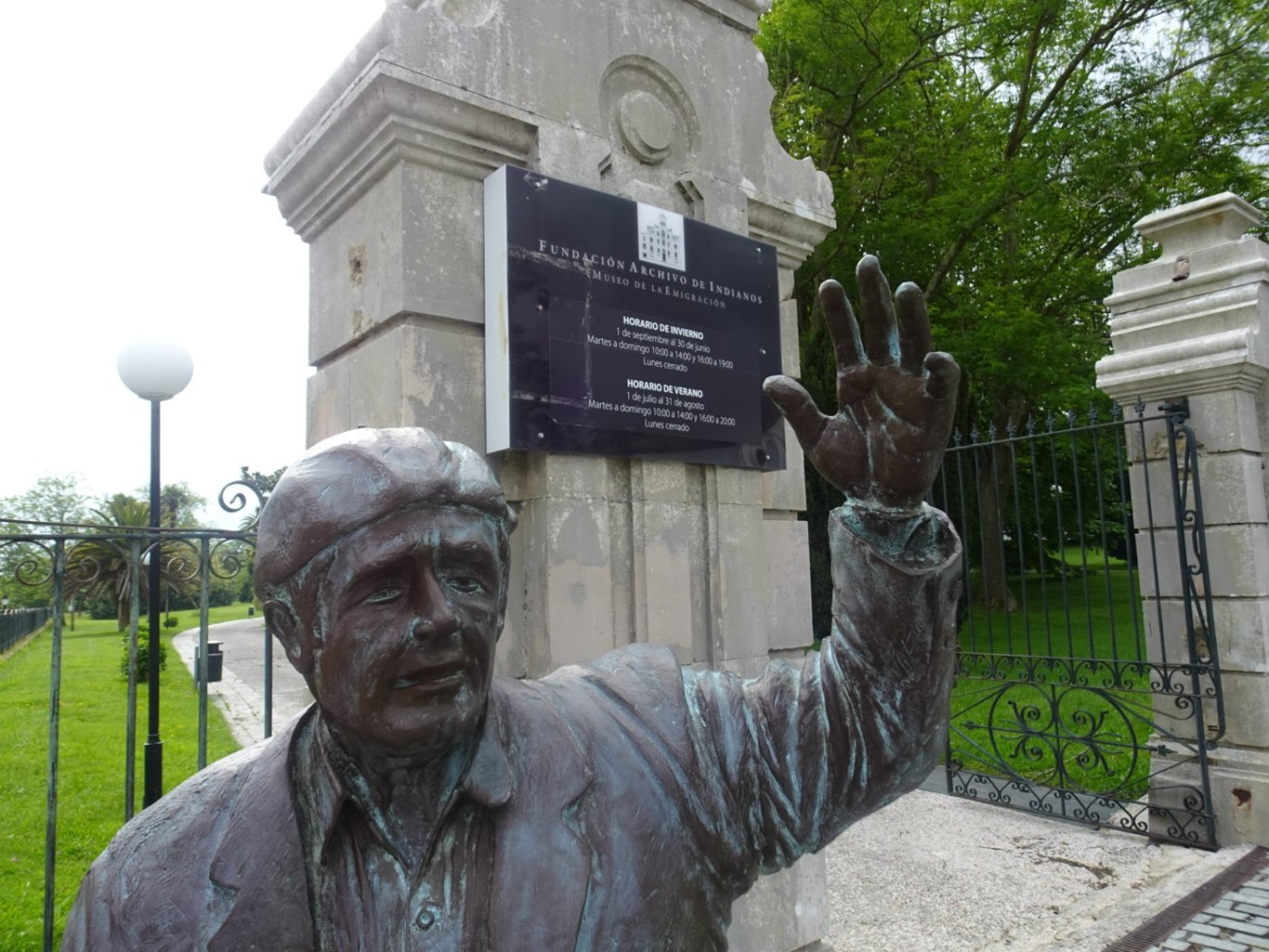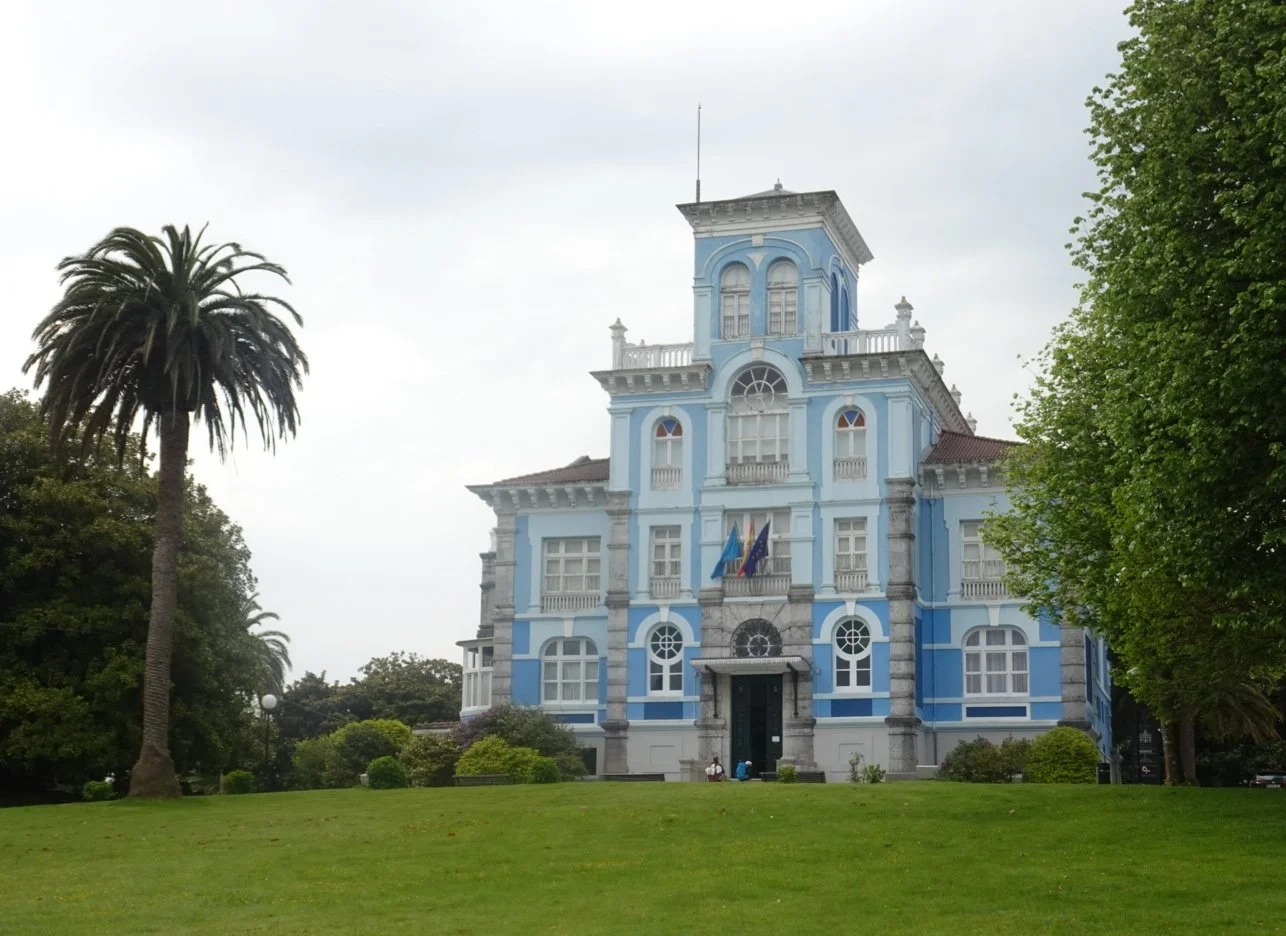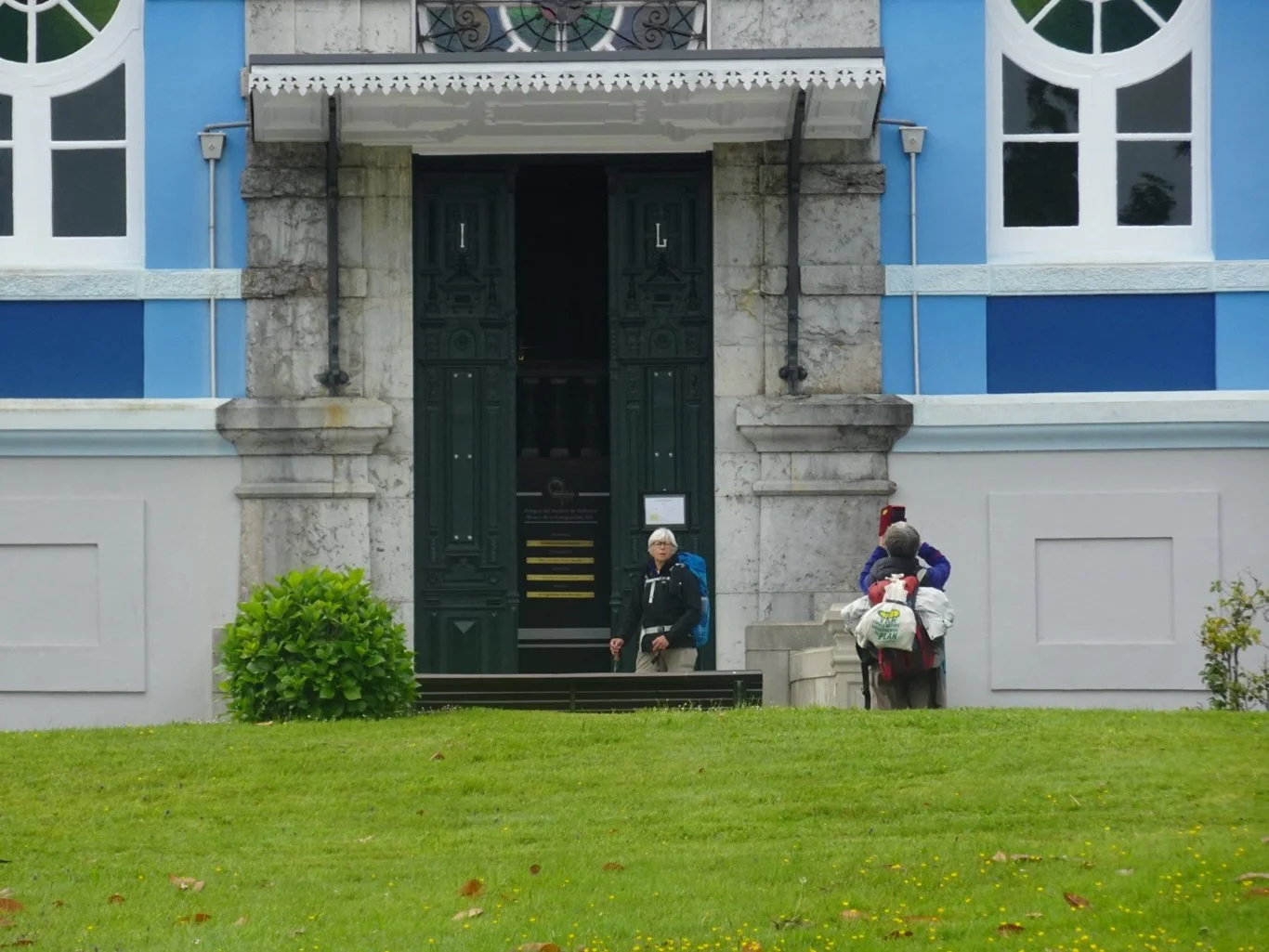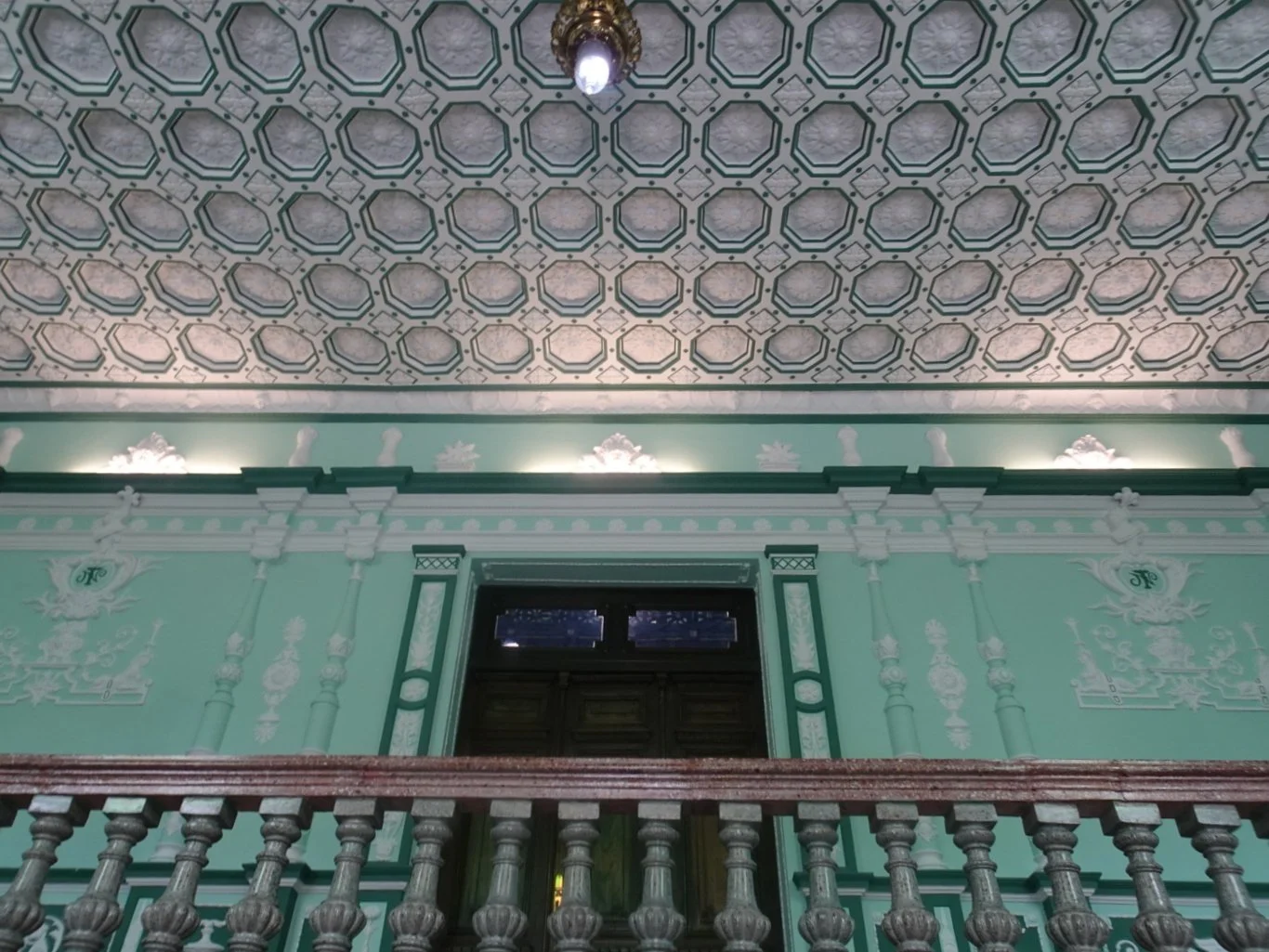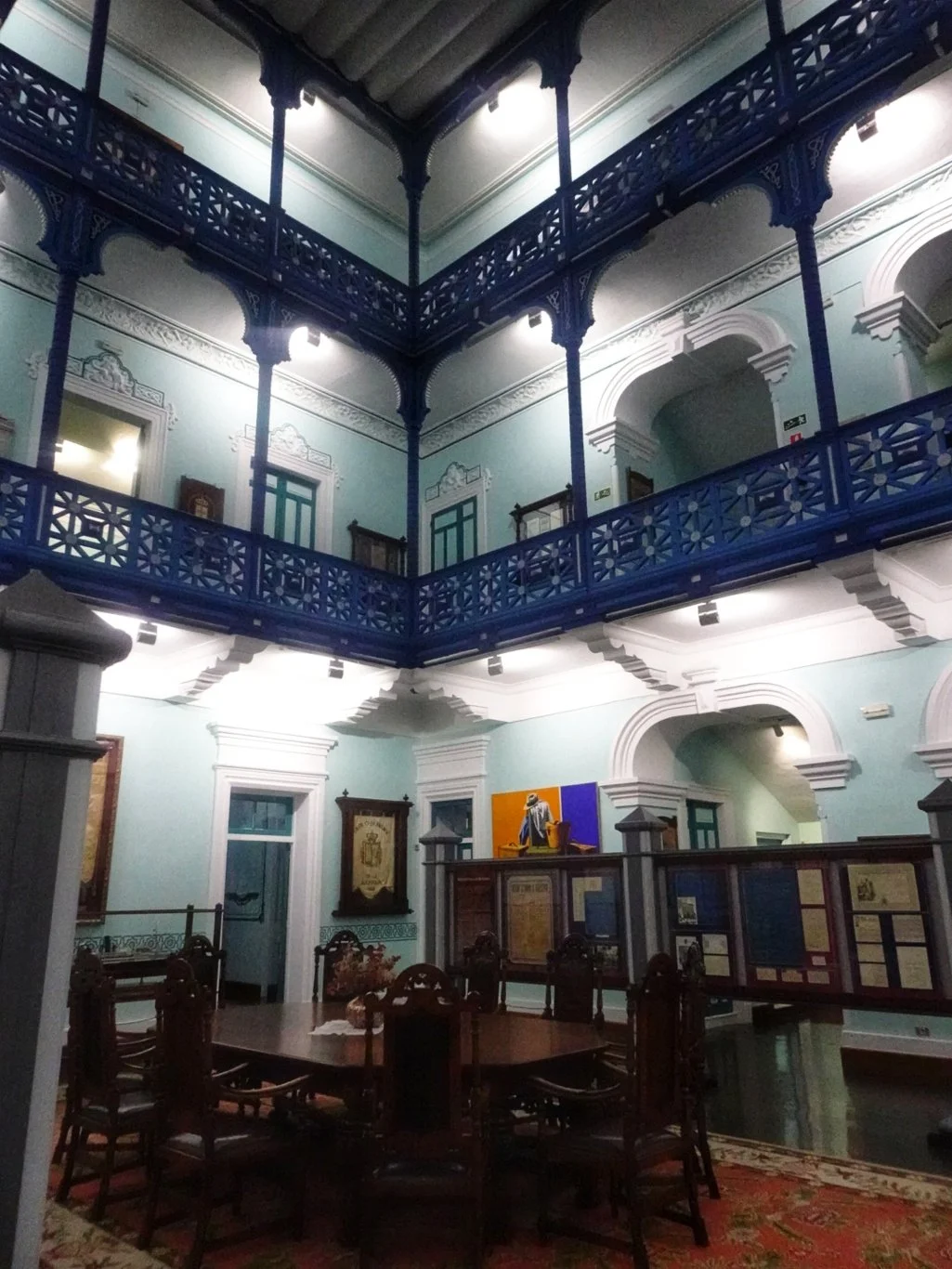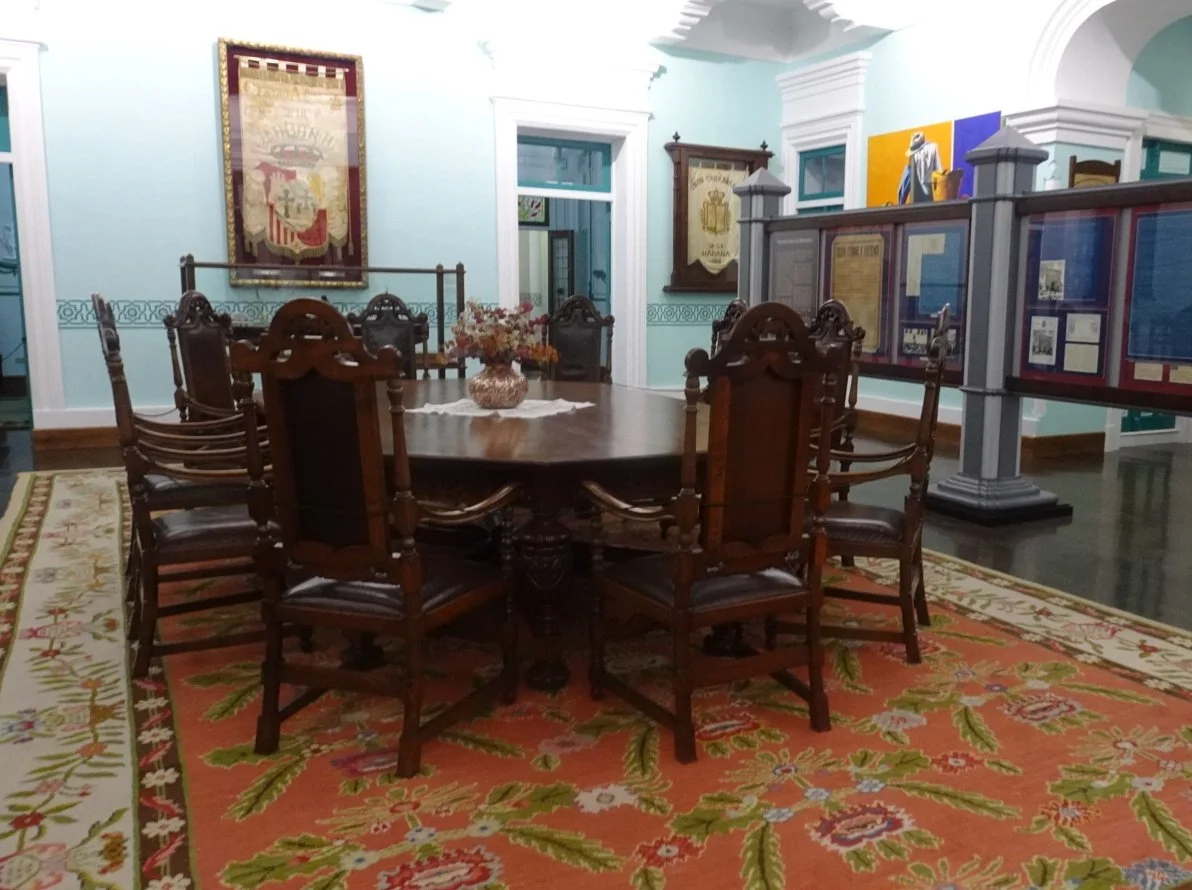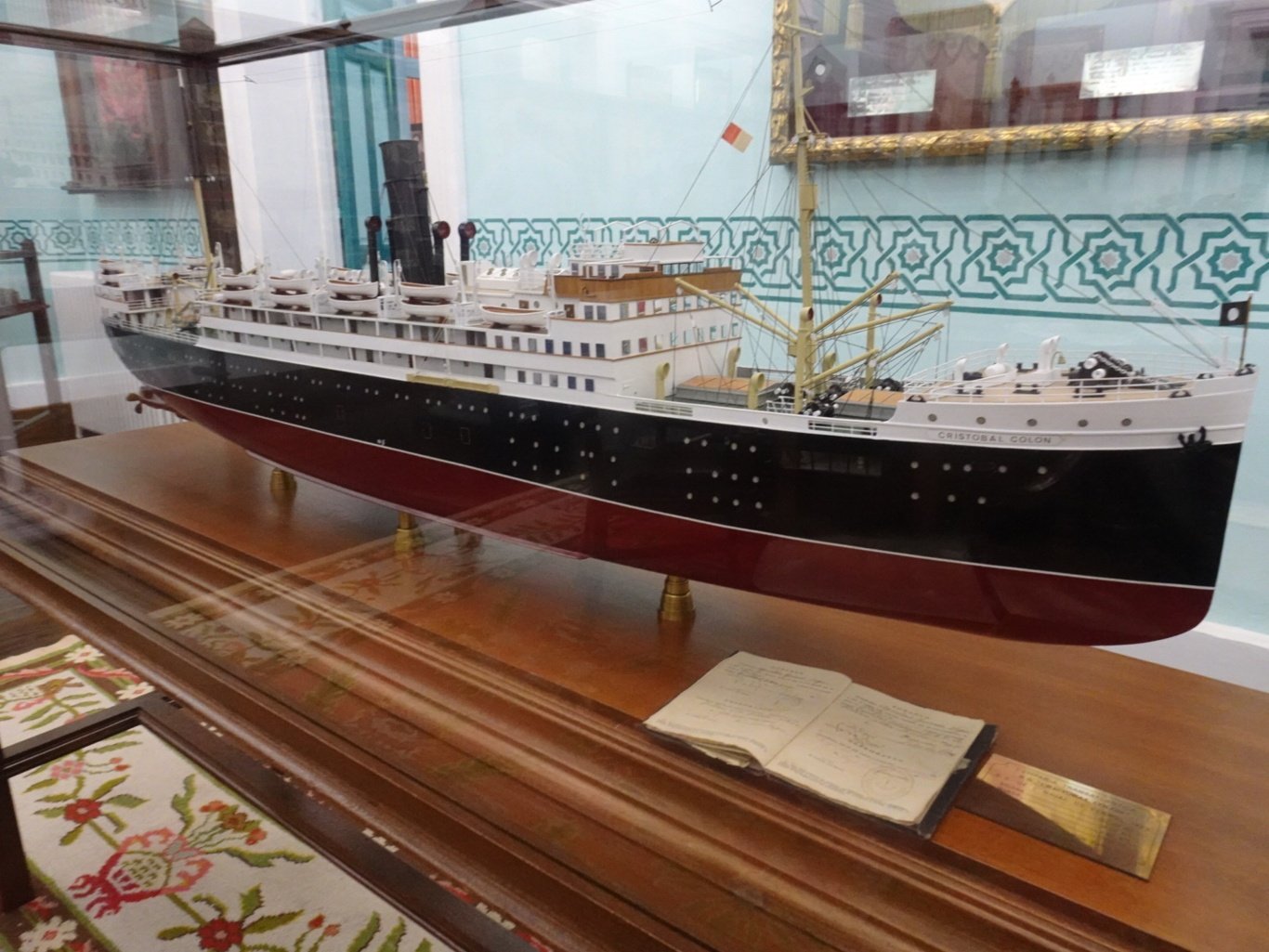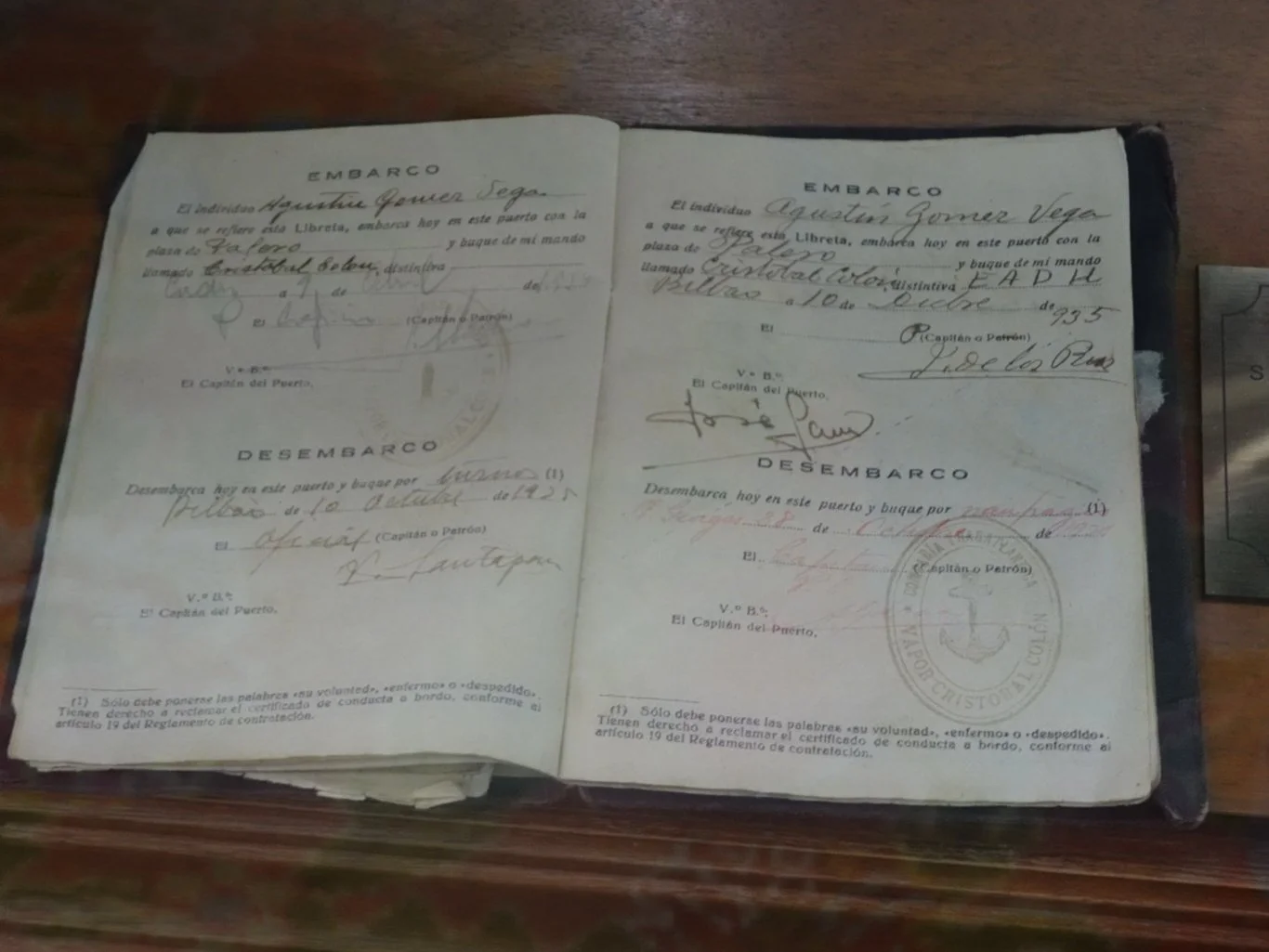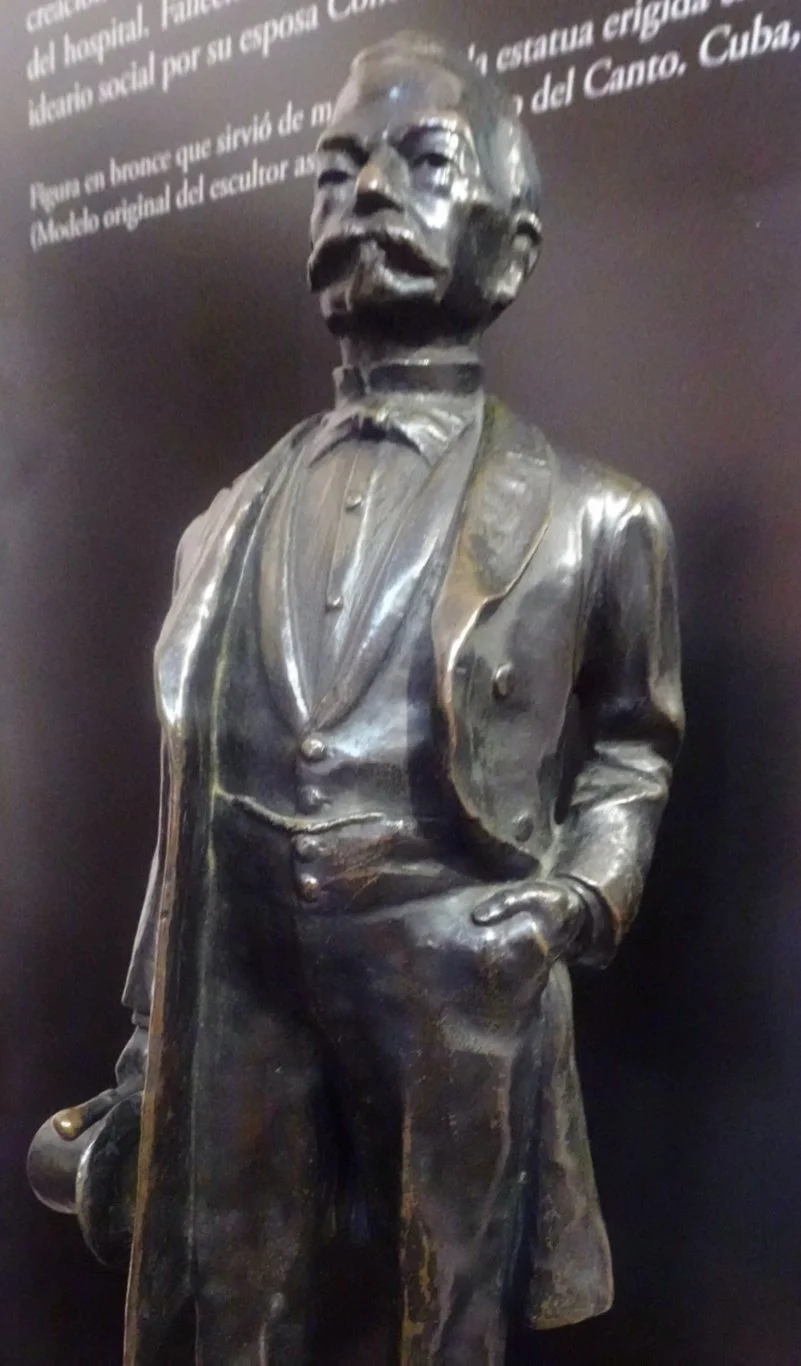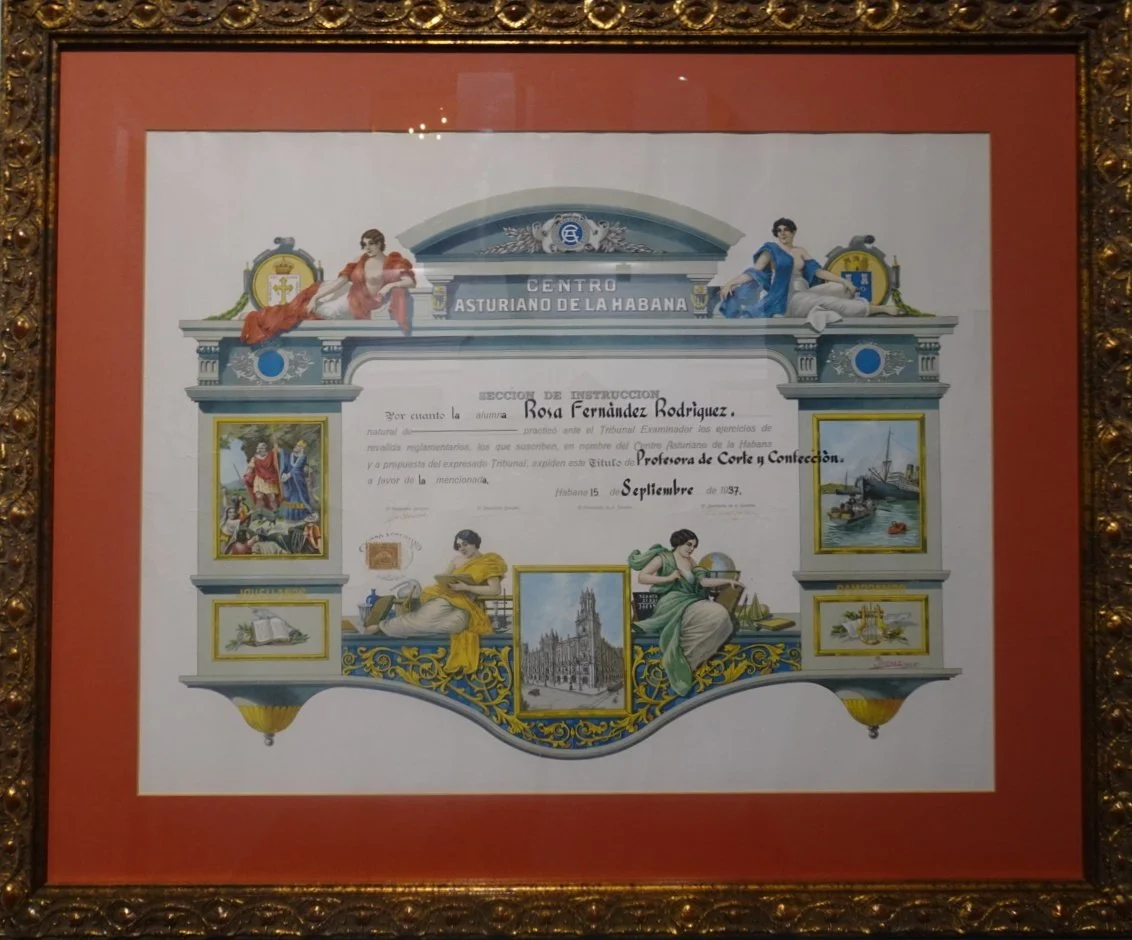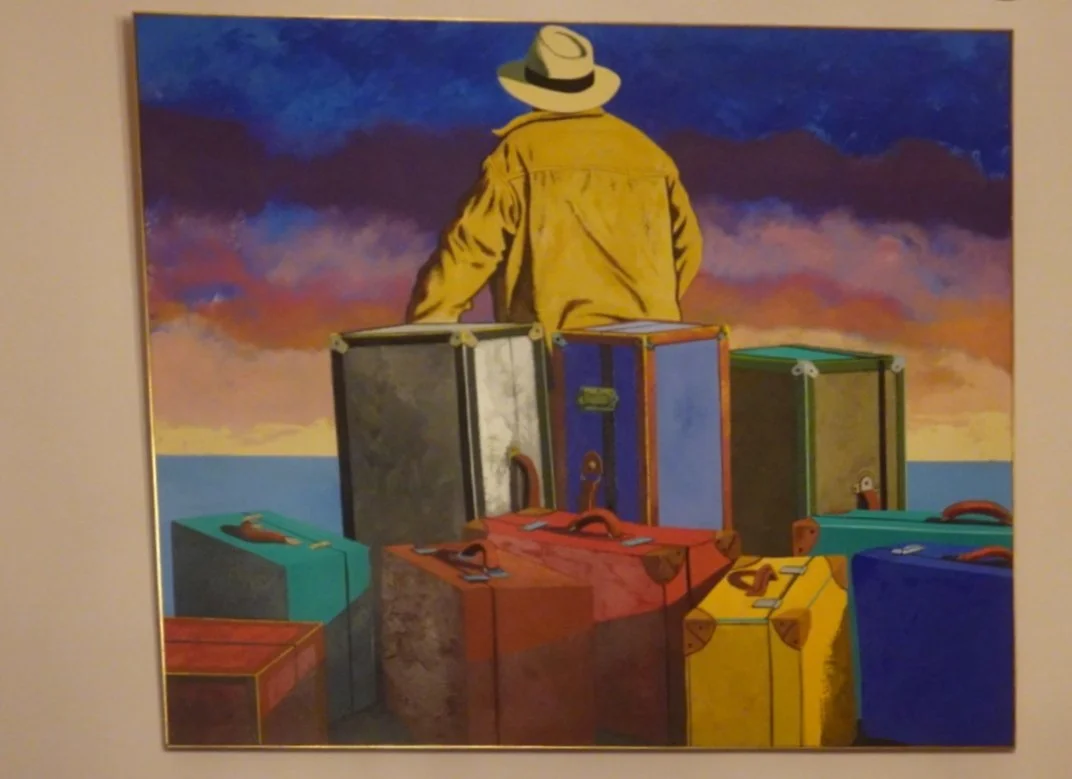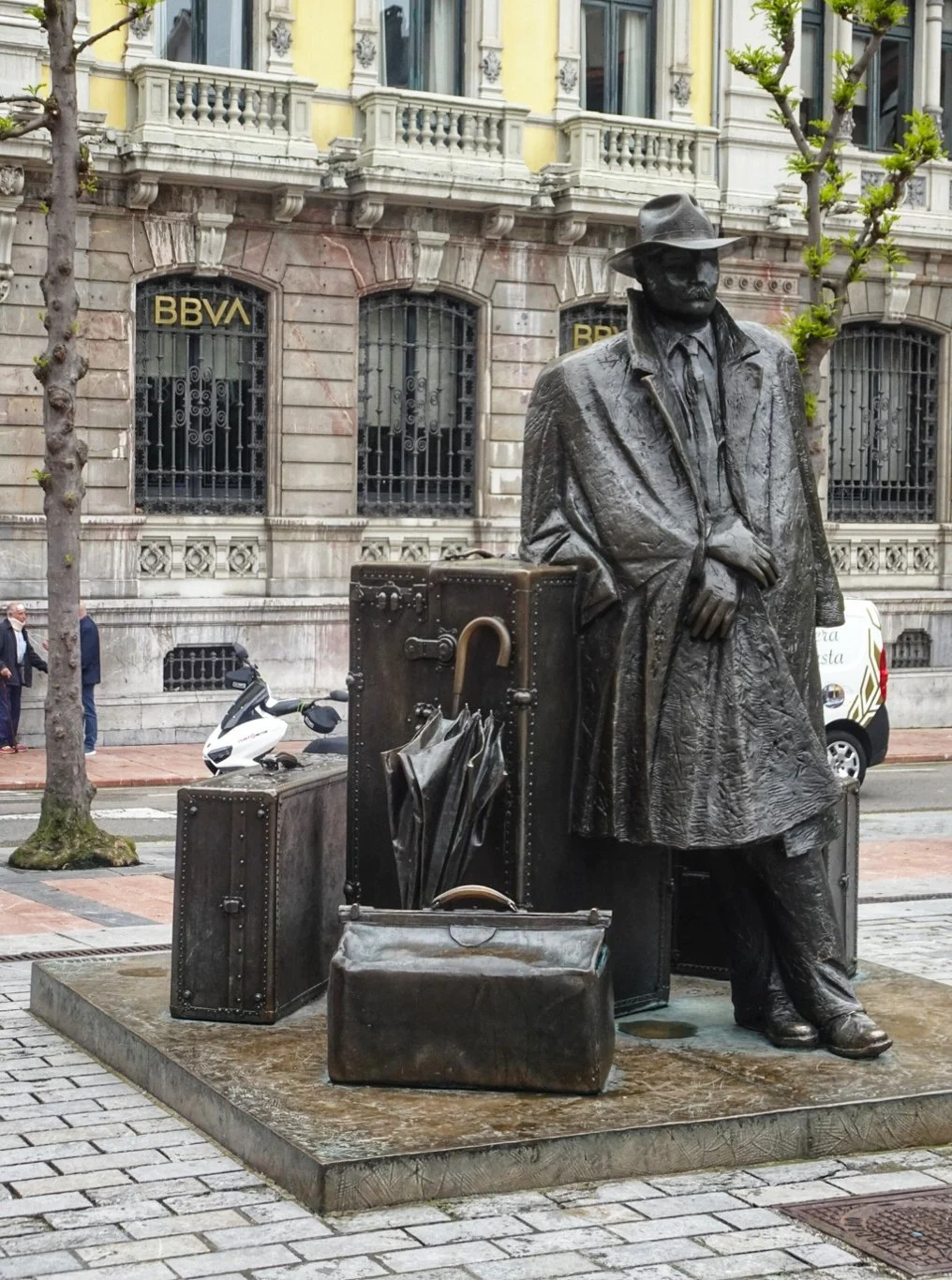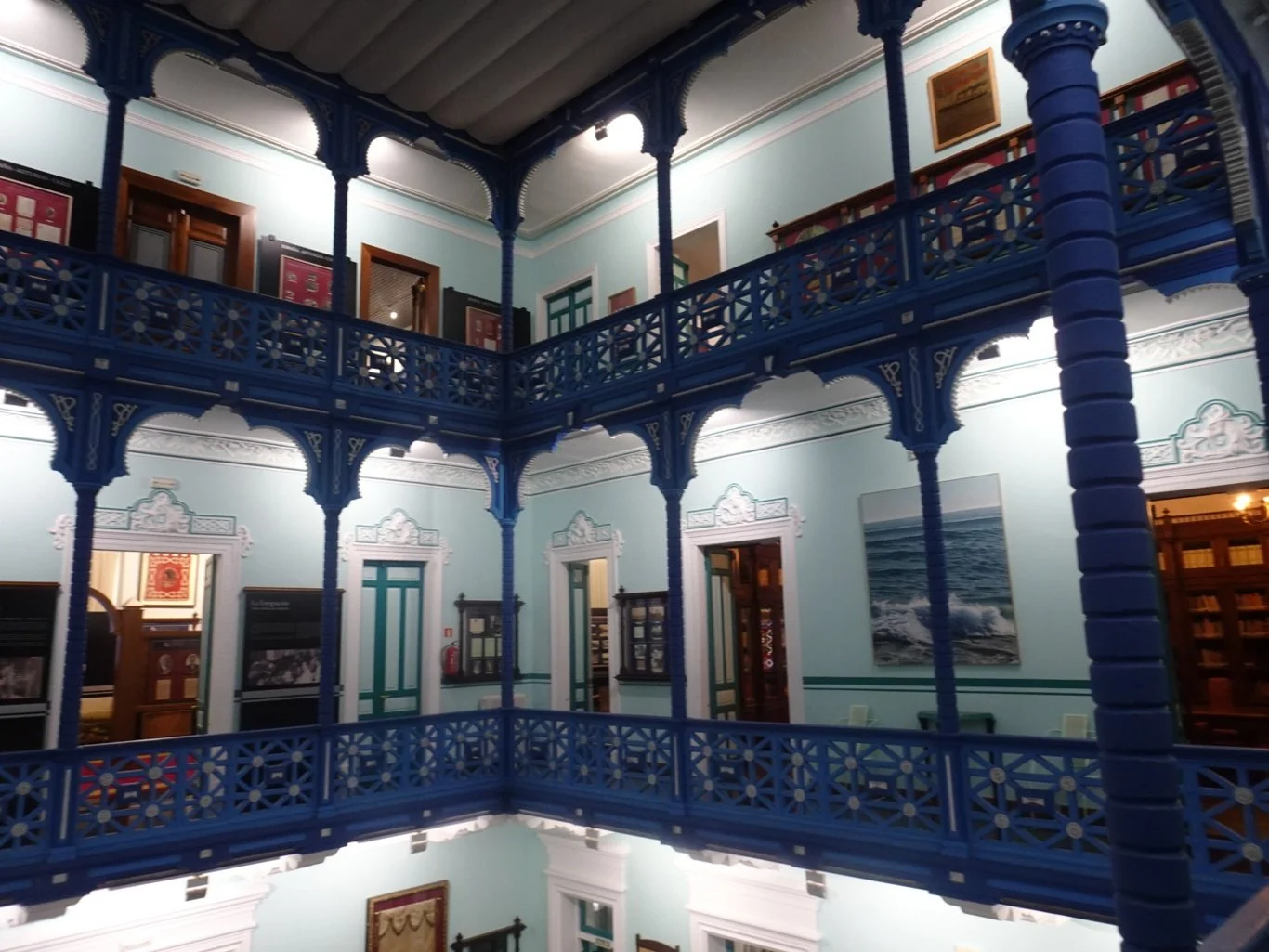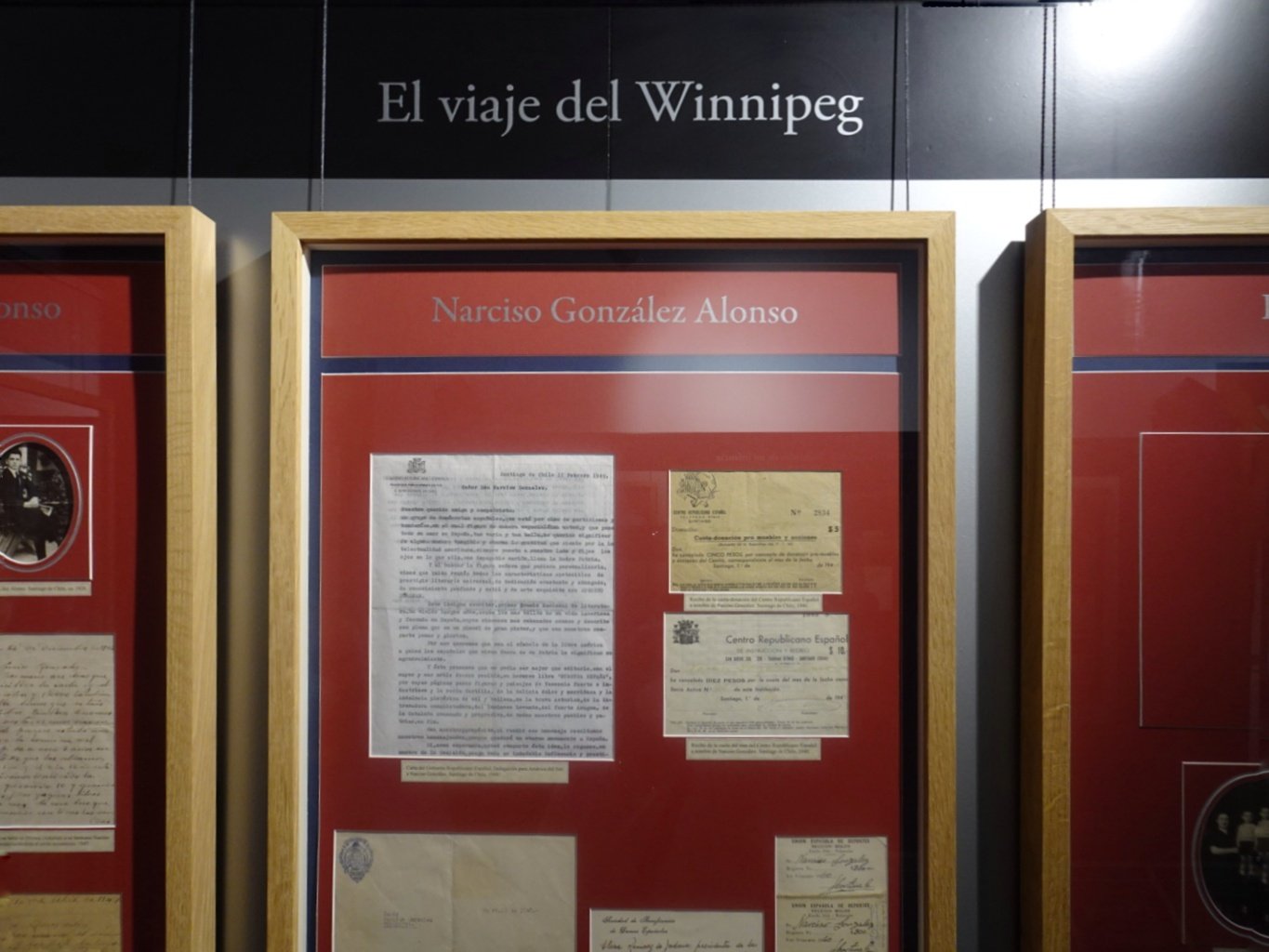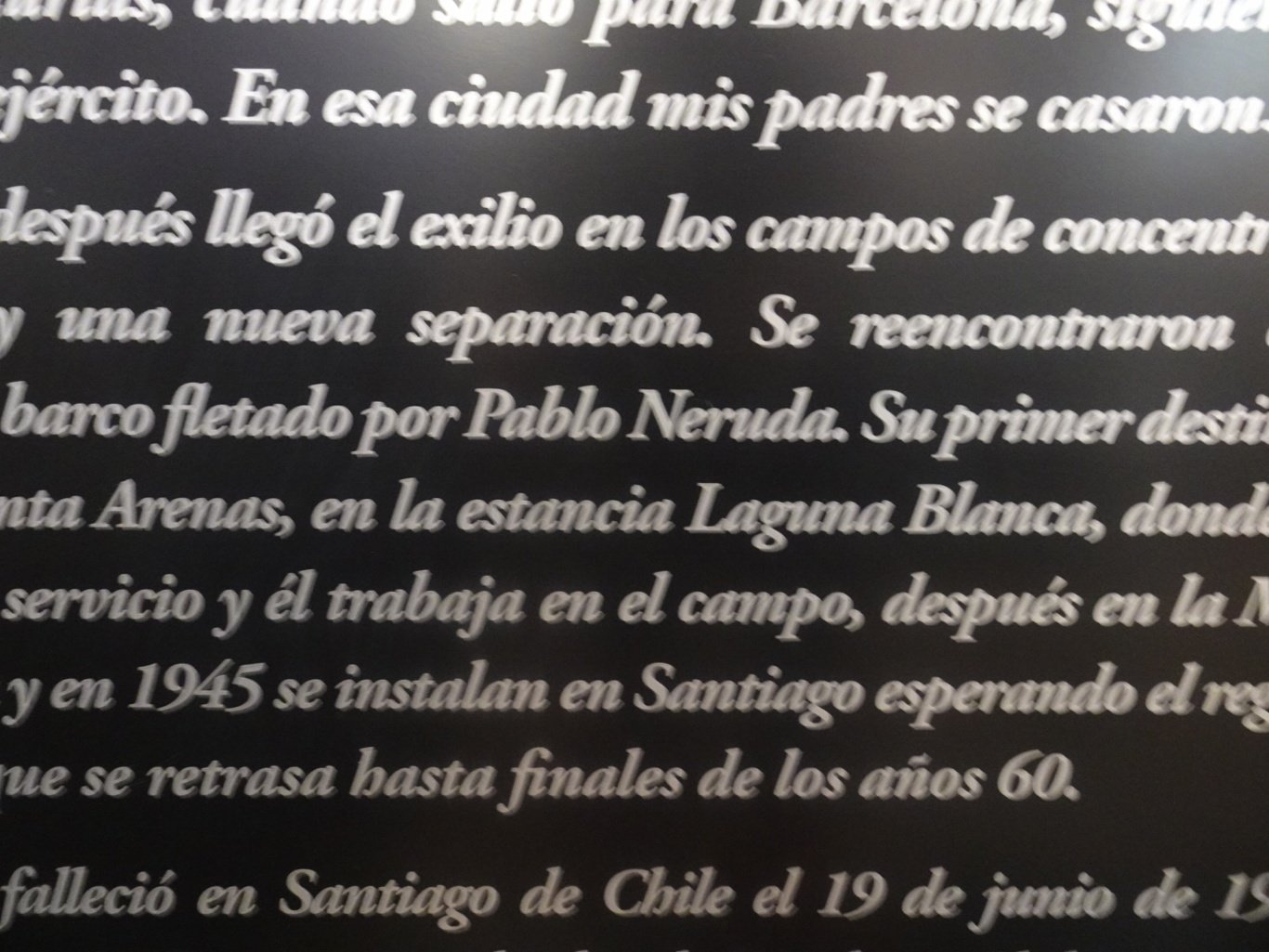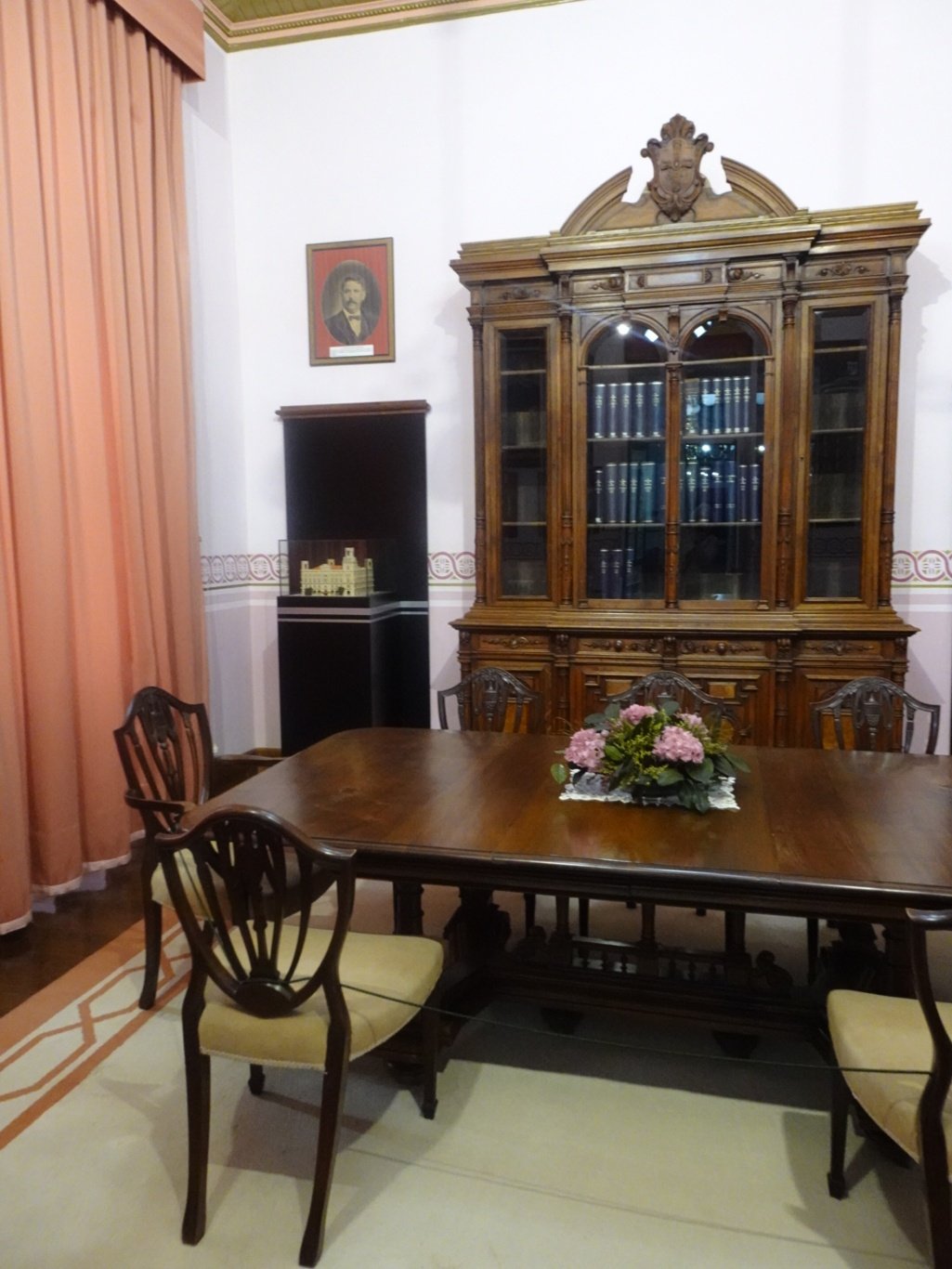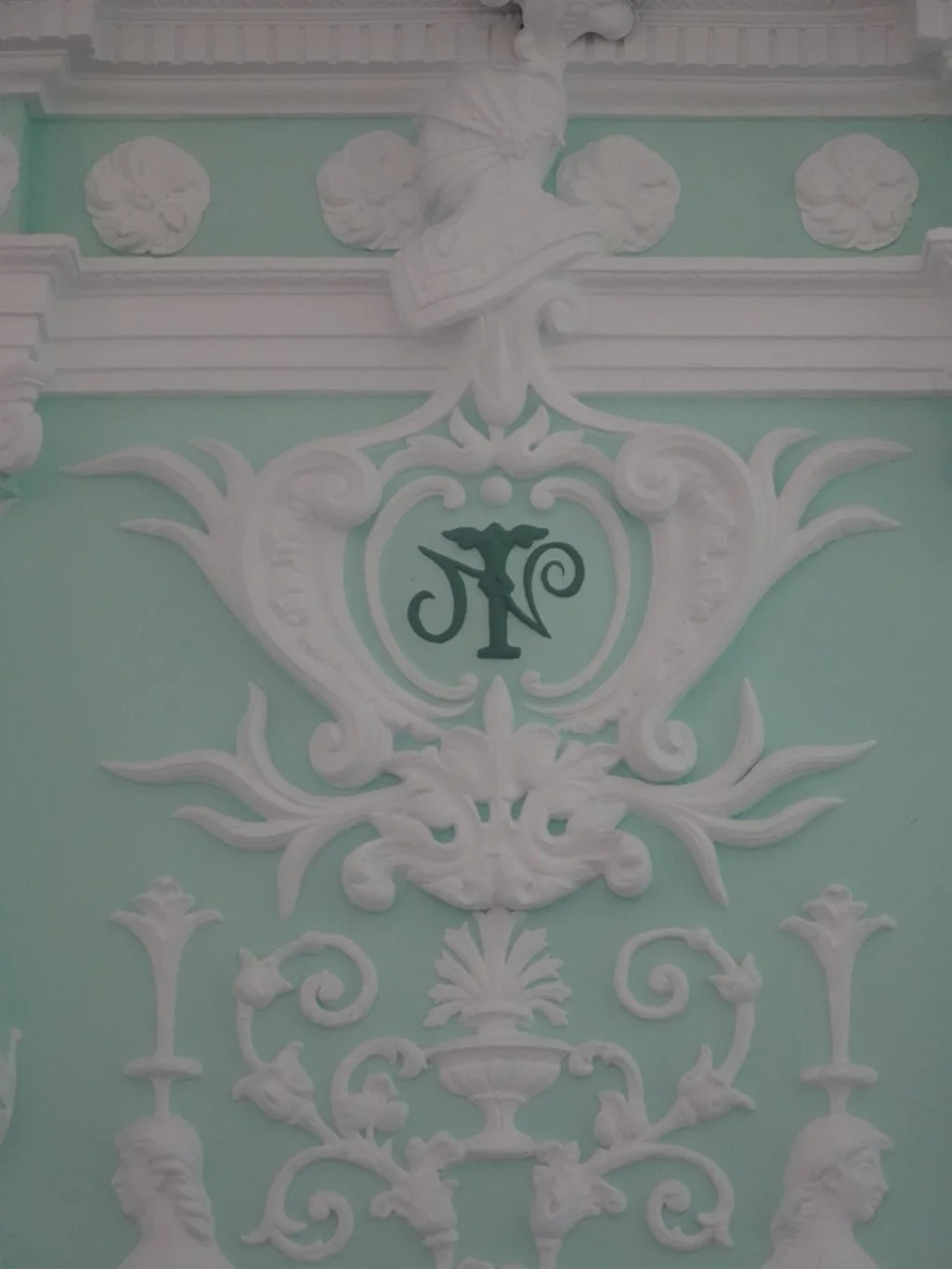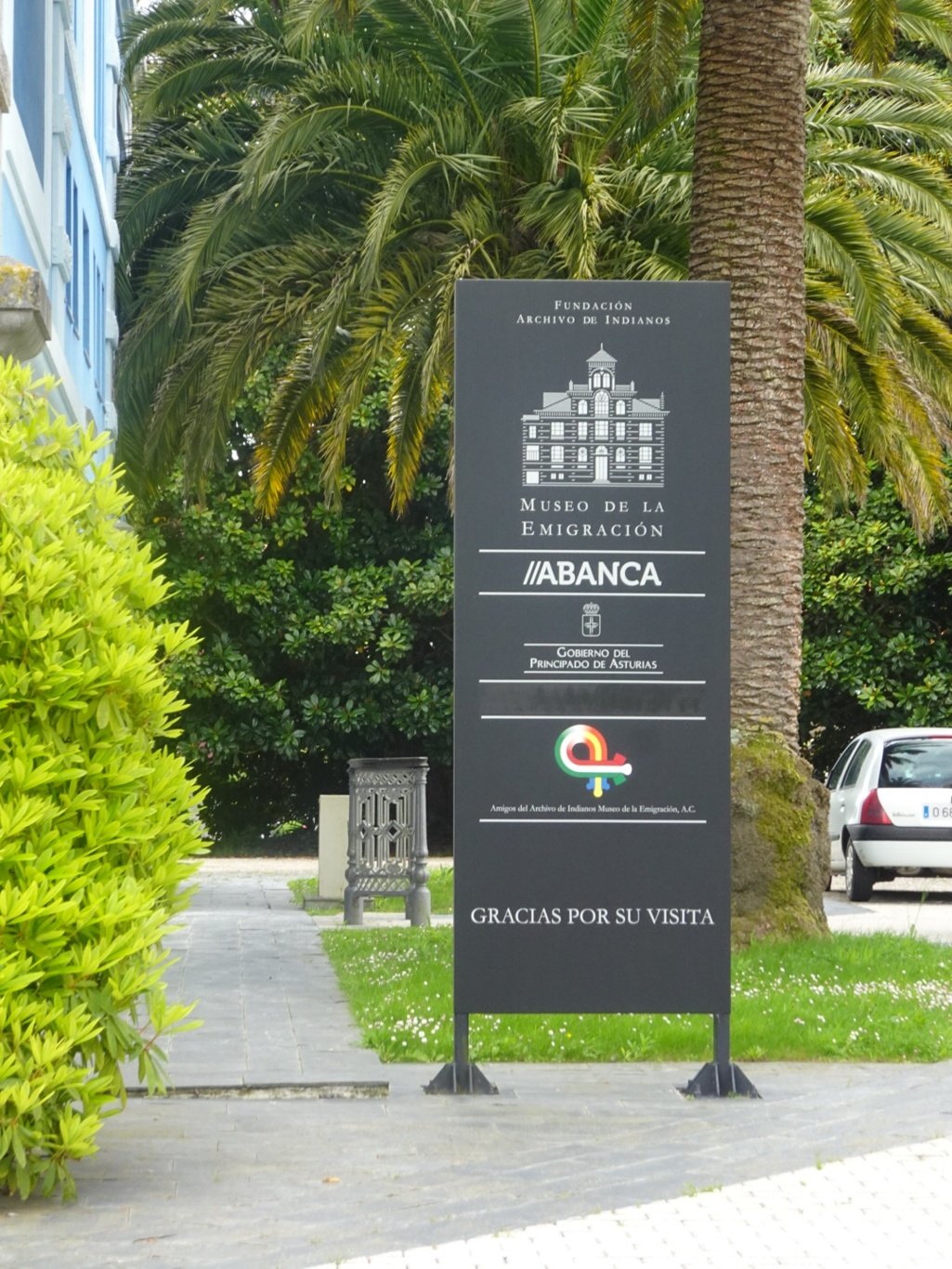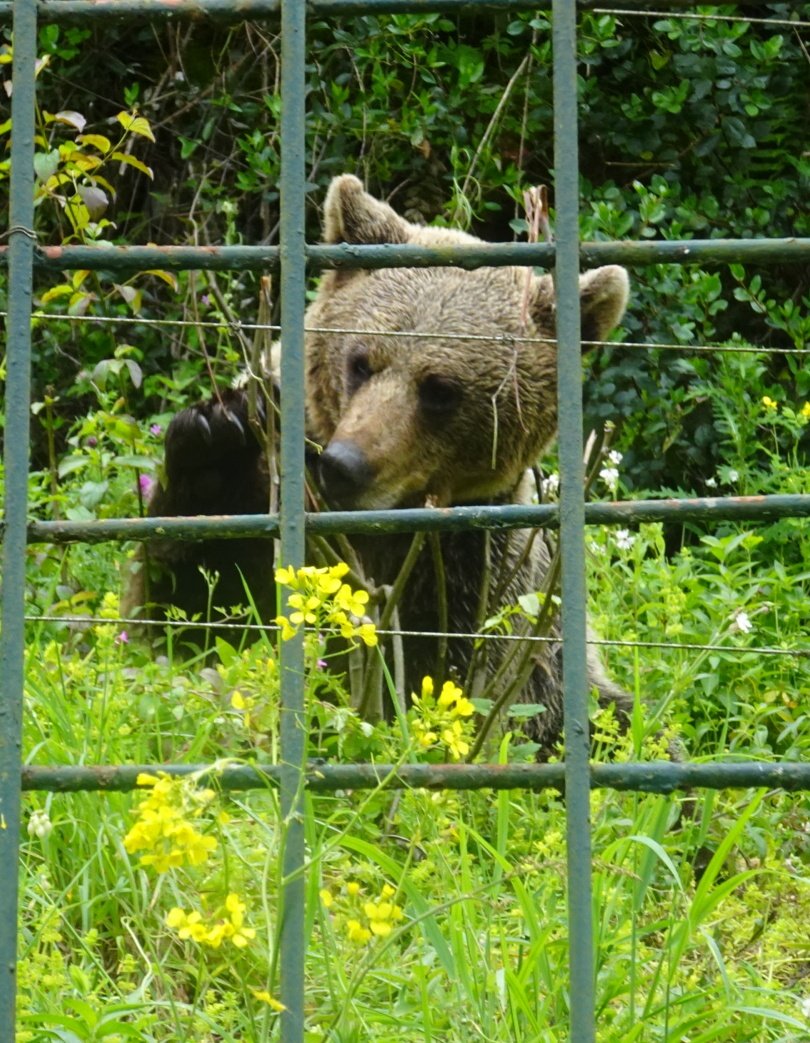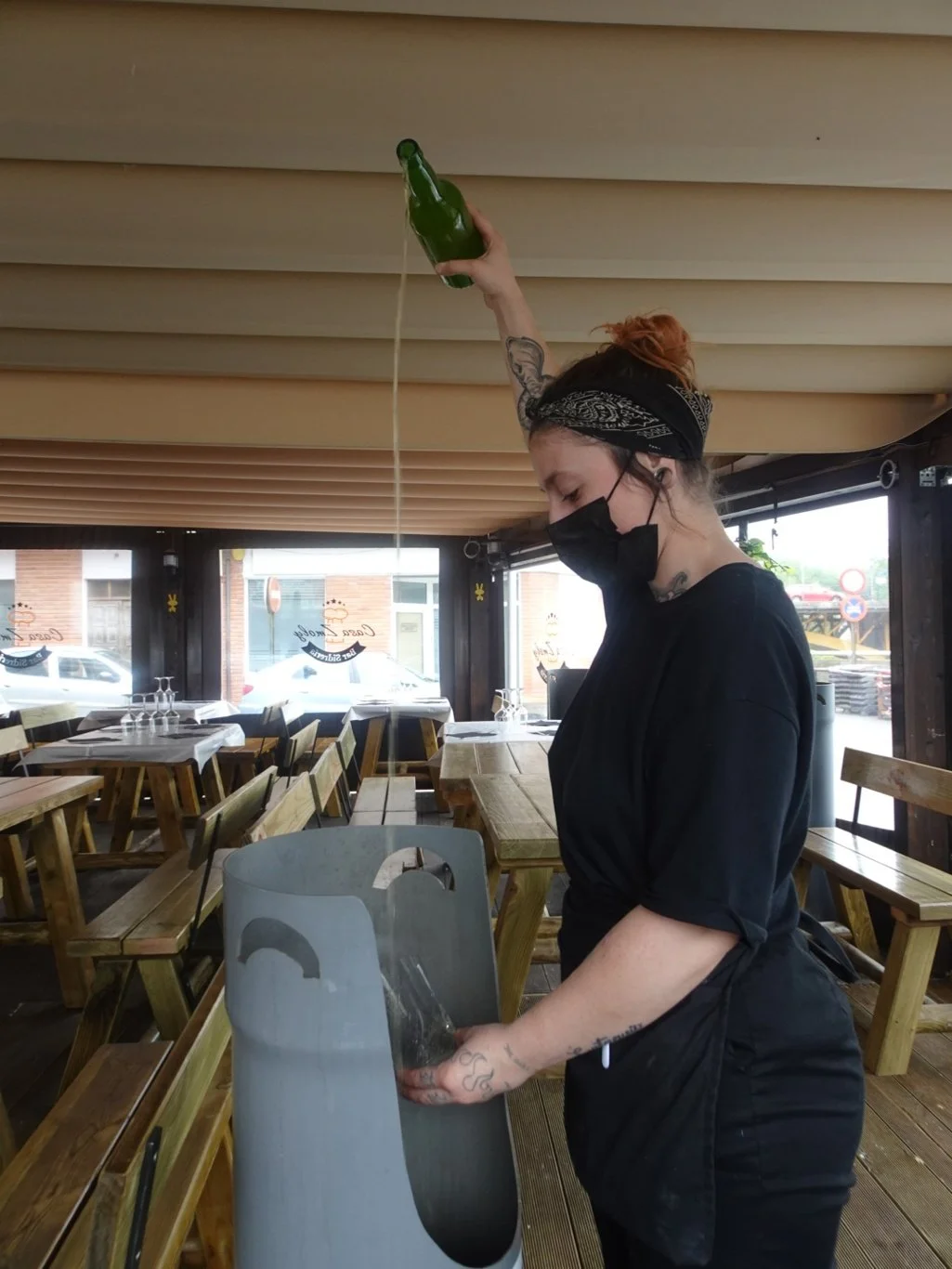Hopes and Dreams
Leaving Oviedo this morning we both commented on the strange light, for it was misty and bright at the same time. We’ve had several of these days now and we hoped that, as it has done so far, the sun would burn off this haze and the day would brighten.
We were headed out on the autovia again. The mountains don’t allow much room for roads and going anywhere involves a route around them usually.
Unless there’s a tunnel beneath them of course. On this road there were many tunnels and viaducts, it was quite the engineer’s dream (or nightmare?)
Our destination was the quiet village of Colombres, where we planned to visit a house which was home to a museum.
A bronze figure by the gate suggested that we had found the right place.
Though actually, I don’t think we would have missed it. It’s pretty spectacular, isn’t it?
You may recall that a few days ago, we were in a small fishing port called Redes, where we sat with a beer in the sunshine admiring the colourful houses around us. We’d read that these houses had been built by returning emigrants, who, having made their fortune, came home and built their house in a rather distinctive style. This was the finest example of its kind and it houses the Museum of Emigration.
There were two ladies by the door, taking each other’s photo, so we exchanged Holas and they replied by saying that we should definitely go inside, for it was a remarkable place. Sadly, they said, they had no time to visit today, for they were pilgrims and were just passing through on their way to Santiago. But they had visited the house on a previous Camino - I think they said this was their third - they were French, living in the South of France and each year they made this their holiday, leaving their husbands at home! Walking 12 or 15km a day, they thought that they’d complete their Camino in about three week’s time.
Oh my. We wished them well and said our goodbyes.
They were correct when they said “remarkable”. The minute we opened the door and stepped inside, we both gasped. The colour! The decor! The detail…
This fabulous house was built on three floors around a central atrium and contained all kinds of ephemera and archive material from the many thousands of Asturians who had emigrated to the Americas from the late 19th century onwards.
Some rooms were furnished as they would have been when this was the home of one of these emigrants. Others were filled with displays and archive material. Most, as in the photograph above, were a combination of the two. We found it all very interesting indeed - or would have done if we had been able to read or understand any of the commentary. Sadly, it was all in Spanish - no translation whatsoever.
With the occasional support of my phone and Google Translate, we muddled through.
The ground floor focused on emigrants to Cuba and by piecing together information from items here and there, it was possible to work out the story of someone’s experience. By this model of the Christoforo Colon was the embarkation details of a couple who sailed to Cuba in 1925.
And just across the way was a sculpture of D Manuel Valle who had emigrated to Cuba aged 14 and subsequenlty became President of the Asturianos Society in Havana from 1886 to 1896. It seems as though emigrants from a particular place stuck together in their new home and in Havana, it appeared there was a sizeable population from Asturias.
I rather liked the look of him, so noted down some details and with a fast internet connection have been able to track down his obituary which contains some fascinating details, including the “three fundamental dreams of the emigrant”. Did you notice the palm tree outside this house?
Amongst the many, many things on display here, this certificate caught my eye. Rosa Fernandez Rodriguez qualified as a teacher of cutting and sewing in 1937. Alongside her certificate were several samples of her work; tiny miniature samples of tailored jackets and trousers, exquisitely made but sadly impossible to photograph due to the reflections on the glass. Throughout the museum were several photographs of young women carrying sewing machines. Wherever in their new world they found themselves, they would surely be able to put their skills to good use.
As we made our way upstairs to the next gallery, my Hero commented on this painting. “It’s that man and his suitcases!”
He was referring to this man
He stands on the corner of a street in Oviedo and is usually accompanied by climbing children or posing tourists. We had always thought of him as a kind of “Third Man” and in our silly way have hummed the tune as we passed. But of course, now we know. He’s an emigrant, isn’t he?
The first floor of the museum was mostly about those who made it to Mexico, the principal thread running through the items on display being Inigo Noriega’s story. There was a huge amount of detail, densely printed Spanish text and though I tried my best, I missed most of it.
Last but not least came the top floor, focuing on emigration to Argentina and Chile. I know that at least one reader will know exactly what popped into my mind at that moment. I didn’t have to look very far because just inside the door, I found
The reference is to Isabel Allende’s book, A Long Petal of the Sea which was a recent choice of my book club (which I blogged about here)
Yes, the poet got his rightful mention, too.
With a last look to make sure we hadn’t missed anything, we returned to the entrance where the woman who greeted us when we arrived was sitting. Using my phone to translate, I asked her “who built this house?” The answer was “Inigo Noriega”
As I sit writing this, my Hero is reading about the Spanish Civil War and I can’t wait to find out more about these people.
So, sorry, Santillana del Mar, even though Sartre himself claimed you to be the prettiest village in Spain, there’s no time to write about you now. We have a table for dinner at 8.30pm!








